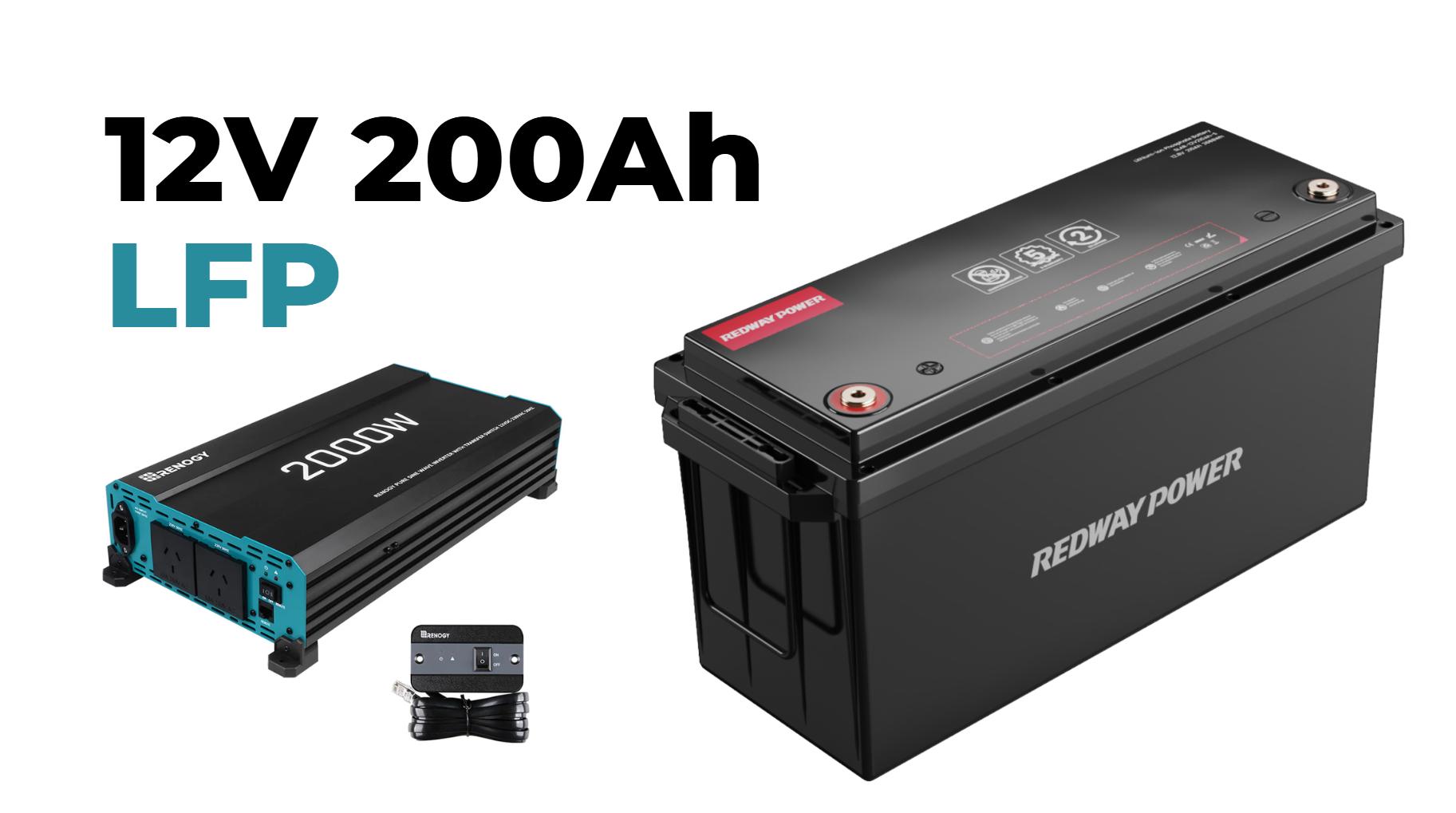
What Size Lithium Battery to Run a 2000W Inverter?
To run a 2000W inverter, you typically need a lithium battery with adequate capacity to handle the load. A common recommendation is to use a 12V lithium battery with at least 100Ah capacity. This ensures that your inverter can operate efficiently without risking battery depletion during use.
What are the power requirements for a 2000W inverter?
A 2000W inverter converts DC power from batteries into AC power, typically required by household appliances. To determine the battery capacity needed, consider both the continuous power rating and any surge power requirements. Most appliances have a starting surge that can be significantly higher than their running wattage, often requiring two to three times their rated power.
| Power Requirement | Value |
|---|---|
| Continuous Power | 2000 Watts |
| Surge Power | Up to 4000 Watts |
How do you calculate the battery size needed for a 2000W inverter?
To calculate the required battery size, follow these steps:
- Determine Daily Usage: Estimate how many hours per day you will run the inverter at full load (e.g., 2000W).
- Calculate Watt-Hours Needed: Multiply the wattage by hours of use. For example, running at full load for 5 hours would require 2000 W×5 h=10000 Wh.
- Convert to Amp-Hours: Divide by the battery voltage (e.g., 10000 Wh/12 V=833.33 Ah ).
- Consider Efficiency: Account for inverter efficiency (typically around 85%-90%). Adjust your calculation accordingly.
Using this method, you can determine that a larger capacity battery may be necessary if running continuously or if accounting for inefficiencies.
| Calculation Step | Example Calculation |
|---|---|
| Daily Usage | 5 hours |
| Watt-Hours Required | 2000 W×5 h=10000 Wh |
| Amp-Hours Needed | 10000 Wh/12 V=833.33 Ah |
| Adjusted for Efficiency | 833.33 Ah/0.85=980.39 Ah |
What types of lithium batteries are suitable for running a 2000W inverter?
The most suitable types of lithium batteries include:
- Lithium Iron Phosphate (LiFePO4): Known for safety and longevity, ideal for high-demand applications.
- Lithium Nickel Manganese Cobalt (NMC): Offers high energy density and is good for applications requiring compact size.
A typical configuration would involve using multiple 12V LiFePO4 batteries in parallel to achieve the desired capacity.
| Battery Type | Characteristics |
|---|---|
| LiFePO4 | Safe, long cycle life, stable performance |
| NMC | High energy density, compact design |
Why choose lithium batteries over lead-acid batteries for inverters?
Lithium batteries offer several advantages over traditional lead-acid batteries:
- Longer Lifespan: Lithium batteries can last up to 10 years or more, while lead-acid typically last about 3-5 years.
- Weight Savings: Lithium batteries are significantly lighter, making them easier to handle and install.
- Higher Efficiency: They can discharge deeper without damage and recharge faster than lead-acid counterparts.
These benefits make lithium batteries more suitable for applications requiring reliable and efficient power delivery.
| Advantage | Lithium Batteries | Lead-Acid Batteries |
|---|---|---|
| Lifespan | Up to 10+ years | Typically 3-5 years |
| Weight | Lighter | Heavier |
| Efficiency | Higher discharge rates | Lower discharge rates |
What factors should be considered when selecting a battery for an inverter?
When choosing a battery for your inverter setup, consider:
- Capacity Needs: Ensure sufficient capacity based on your usage calculations.
- Voltage Compatibility: Match the battery voltage with your inverter specifications (e.g., typically 12V).
- Physical Size and Weight: Ensure it fits within your space constraints and is manageable.
- Cost vs. Performance: Balance initial costs against expected lifespan and performance benefits.
These considerations will help ensure that you select the best battery type suited to your specific needs.
Industrial News
The demand for lithium batteries in renewable energy systems continues to grow as more consumers shift towards sustainable energy solutions. Innovations in battery technology are leading to improved energy densities and longer lifespans, making them increasingly attractive options for powering inverters in residential and commercial settings. As manufacturers invest in research and development, consumers can expect even more efficient and cost-effective solutions in the near future.
Expert Views
Choosing the right battery size and type is crucial when operating a high-capacity inverter like a 2000W model. Lithium batteries not only provide better efficiency but also enhance overall system reliability.” – Renewable Energy Consultant
FAQ Section
Here are some frequently asked questions regarding lithium batteries suitable for running a 2000W inverter:
- What size lithium battery do I need to run a 2000W inverter?
Generally, you will need at least one or more 12V lithium batteries with sufficient capacity (e.g., around 100Ah or more) depending on usage. - Can I use lead-acid batteries instead of lithium?
Yes, but lithium batteries offer better performance, longer lifespan, and efficiency compared to lead-acid options. - How do I calculate my total power needs?
Multiply your device’s wattage by the number of hours you plan to use it daily; factor in efficiency losses as well. - What is the difference between LiFePO4 and NMC batteries?
LiFePO4 is known for safety and longevity, while NMC offers higher energy density but may come with increased costs. - Are there specific brands recommended for lithium batteries?
Brands like Battle Born, Renogy, and EcoFlow are popular choices known for quality and reliability in lithium battery systems.
